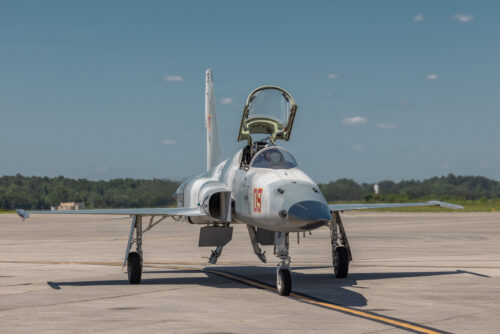The U.S. Marine Corps (USMC) has taken a significant step in enhancing its training capabilities with the arrival of the first F-5N Tiger II aircraft at Marine Corps Air Station (MCAS) Beaufort, South Carolina back in May. These aircraft will form the foundation of Marine Fighter Training Squadron (VMFT) 402, the service’s second adversary squadron.

The establishment of VMFT-402 is a pivotal moment for the Marine Corps, providing essential adversary training support for F-35 pilots on the East Coast. The squadron will join VMFT-401, based at MCAS Yuma, Arizona, in providing realistic and challenging training scenarios. Both squadrons will fall under the umbrella of Marine Aircraft Group 41 (MAG-41), 4th Marine Aircraft Wing (4th MAW) and Marine Forces Reserve.
The F-5N Tiger II, a proven adversary platform, will enable VMFT-402 to replicate the tactics and capabilities of potential adversaries, enhancing the training experience for fleet units. “We, as experts in adversary tactics and experts in the way the adversary fights, provide the fleet units with a unique look at basically what the adversary does,” said Maj. Erin Mathis, operations officer, VMFT-402.
MCAS Beaufort was selected as the home for VMFT-402 due to its proximity to training ranges and existing aviation infrastructure. The base has a long history of supporting fighter training, making it an ideal location for the new adversary squadron. It is also home to VMFAT-501, the F-35B Fleet Replacement Squadron for the USMC on the East Coast.
The establishment of VMFT-402 is part of the Marine Corps’ broader effort to expand its adversary capabilities and enhance the training of its pilots. It is seen as a critical step in ensuring the Marine Corps’ pilot readiness for future challenges.
For more information, hit the Source below